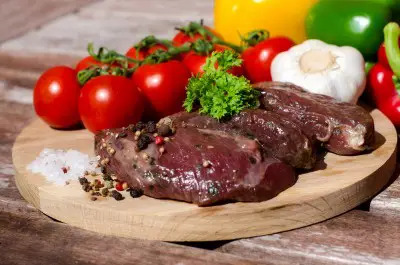Teens, especially active teens and teenage athletes, have special nutrition needs. Here’s a guide to feeding your teen athlete, including meal ideas for active teens that support their sports performance as well as their development.
Most teens don’t get enough of certain key nutrients in their diet. For student athletes, who are burning more calories due to their physical activity levels, it is even more imperative for them to consume foods high in the following nutrients:
Calcium
Why They Need It: Calcium is crucial for teens because their bones are growing rapidly. Achieving optimal bone mass during these years can help decrease the risk of osteoporosis and fractures throughout adulthood.
Where to Get It: Calcium can be found in dairy products as well as in kale, broccoli, mustard and collard greens, almonds, and soybeans. To help with the absorption of calcium, teens require Vitamin D. Vitamin D can be obtained only through fortified foods, supplements, or when skin is exposed to direct sunlight.
Iron
Why They Need It: Iron aids in the production of red blood cells that transport oxygen throughout the body, so low iron levels can result in poor stamina and athletic performance. Once girls begin menstruating they may have an even greater risk of developing an iron deficiency.
Where to Get It: Good sources of iron include meat, fish, and poultry. Plant-based sources are beans, peas, nuts, and seeds, or fortified cereals. To enhance iron absorption, it is best to consume it with a source of Vitamin C (see the section on this vitamin below).

Zinc
Why They Need It: Zinc helps the body make protein and plays a role in growth and sexual maturation, making it especially vital during the teen years.
Where to Get It: Zinc is abundant in red meat and shellfish but can also be found in pumpkin seeds, wheat germ, dark chocolate, sesame seeds, garlic, and beans.
Magnesium
Why They Need It: Magnesium helps maintain muscle and nerve function. It’s also involved in regulating metabolism and making protein. This mineral supports a healthy immune system, helps regulate blood sugar levels, maintains a steady heartbeat, and keeps bones strong.
Where to Get It: Spinach and kale are good sources of magnesium, as are beans, peas, nuts and seeds, and whole grains.
Vitamin A
Why They Need It: Vitamin A is important for vision and is essential for reproduction, growth, and immune function.
Where to Get It: Good sources are carrots, ready-to-eat cereals, cheese, milk, sweet potatoes, tomatoes, and spinach.
Vitamin C
Why They Need It: Vitamin C is involved in the production of collagen and connective tissues, which also helps to promote wound healing.
Where to Get It: Citrus fruits and juices, berries, tomatoes, broccoli, and avocado are all great sources of Vitamin C.
Vitamin E
Why They Need It: Vitamin E, along with Vitamins A and C, is a powerful antioxidant needed for new cell growth. This is particularly important during the teen years, when body mass is increasing.
Where to Get It: Sources most commonly consumed by teens include nuts and seeds, fortified cereals, and tomatoes.
Vitamin B6
Why They Need It: This vitamin is linked to energy and the production of hemoglobin, a protein that helps red blood cells transport oxygen. A lack of hemoglobin can negatively affect athletic performance.
Where to Get It: B6 can be found in meat, fish, poultry, eggs, beans and seeds, and whole grains.
Learn More
Read more of Werner’s tips for fueling teen athletes
Robin Werner MS, RD, was, once upon a time, a teenage athlete herself. The daughter of a competitive swimmer and coach, she played Little League and then joined her school’s tennis team from eighth grade until senior year. She and her husband, Greg, live in Westchester with their three children, all of whom have carried on the athletic tradition with their activities of choice: softball, ballet, and golf. For more information, visit wernernutrition.com or “like” the Robin Werner Nutrition page on Facebook.

















